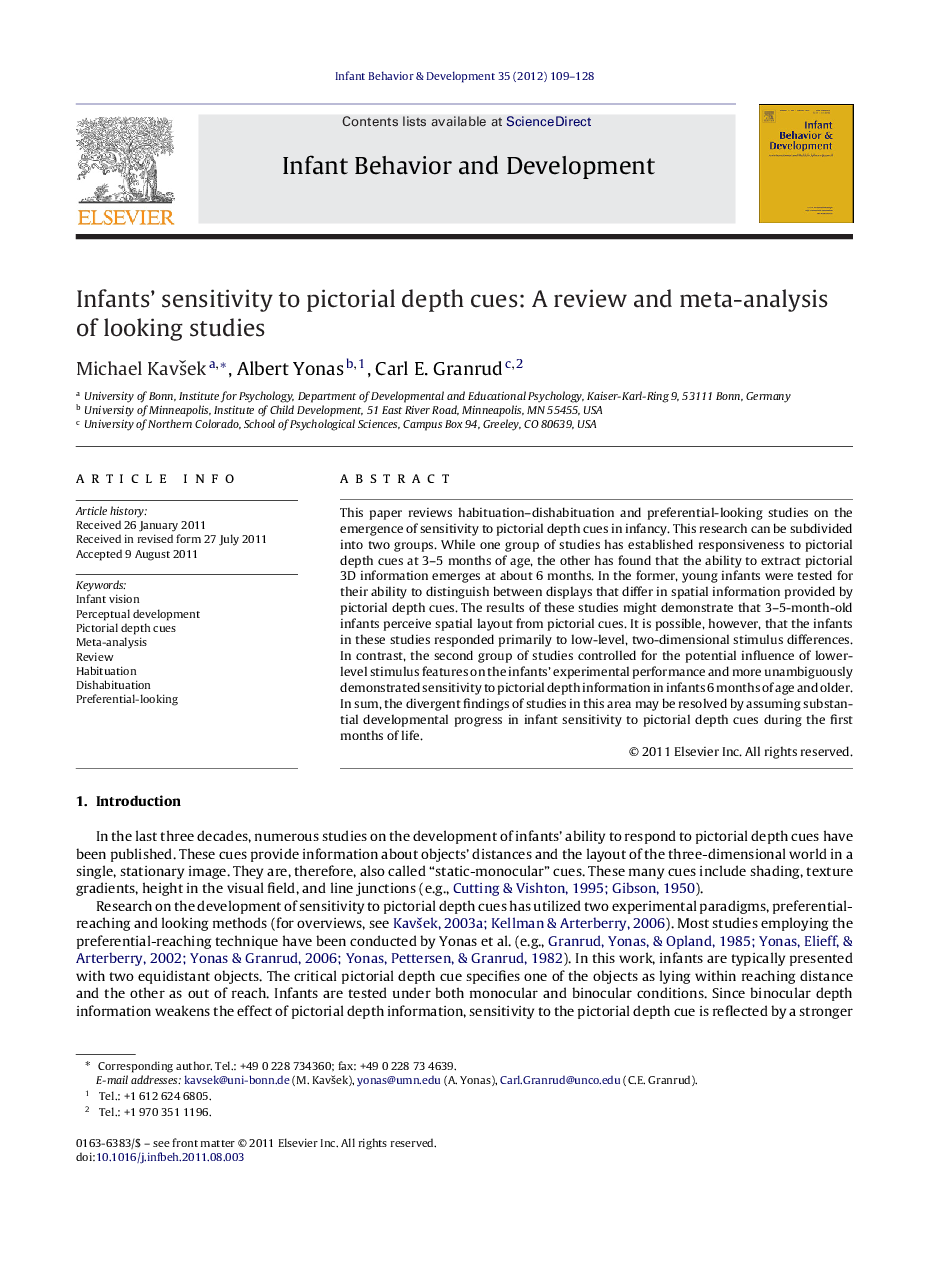| کد مقاله | کد نشریه | سال انتشار | مقاله انگلیسی | نسخه تمام متن |
|---|---|---|---|---|
| 917268 | 919258 | 2012 | 20 صفحه PDF | دانلود رایگان |

This paper reviews habituation–dishabituation and preferential-looking studies on the emergence of sensitivity to pictorial depth cues in infancy. This research can be subdivided into two groups. While one group of studies has established responsiveness to pictorial depth cues at 3–5 months of age, the other has found that the ability to extract pictorial 3D information emerges at about 6 months. In the former, young infants were tested for their ability to distinguish between displays that differ in spatial information provided by pictorial depth cues. The results of these studies might demonstrate that 3–5-month-old infants perceive spatial layout from pictorial cues. It is possible, however, that the infants in these studies responded primarily to low-level, two-dimensional stimulus differences. In contrast, the second group of studies controlled for the potential influence of lower-level stimulus features on the infants’ experimental performance and more unambiguously demonstrated sensitivity to pictorial depth information in infants 6 months of age and older. In sum, the divergent findings of studies in this area may be resolved by assuming substantial developmental progress in infant sensitivity to pictorial depth cues during the first months of life.
► Some looking studies have shown that infants 3–5 months of age respond to pictorial depth cues.
► Other looking studies have shown that sensitivity to pictorial depth cues emerges after 5 months of age.
► The studies with younger infants used various methods to increase the saliency of the critical depth cues.
► In the studies with younger infants, the infants might have responded to low-level stimulus differences.
► The studies with older infants controlled for the potential influence of low-level stimulus differences.
Journal: Infant Behavior and Development - Volume 35, Issue 1, February 2012, Pages 109–128